
4 minute read
Ladies of Libaas
from RAYS Issue 3
By Daniel Bosley
Advertisement


Top: Young Maldivian woman wearing traditional late 19th century dress with bangles PHOTO: C. W. ROSSET, 1885
The image of traditional Maldivian women’s dress is carried in the heart of every islander, and normally in their pockets. The libaas lady in red, yellow, and black – cool, comfortable and confident – has become synonymous with Dhivehi culture and still sits proudly on (new) MVR100 notes and (old) passports.
(The masveriya in a mundu has to settle for the MVR20…sorry fellas)
But, people’s pockets might be the most reliable place to spot this style nowadays, with just a few stoic fashionistas on far-flung fushis keeping the look alive. For the younger generations, the traditional dress is very much for dress-up only.
While libaas simply translates as ‘dress’, boavalhu libaas specifically describes a longsleeved shirt with the wide neck, which is then often trimmed with the white and gold kasabu. The finished product is referred to as karufehi libaas, and is worn with an underskirt – feyli – often patterned in black and white.
The embroidery of this distinctive neckline is one of the few traditional crafts still practised in the country, with cultural events meaning a few small businesses are still kept busy embroidering – more often making child-size dresses (yours in around 2 weeks, for MVR2,500-3,000).
The origins of the libaas style can only be guessed at, though the stranded sailor Francois Pyrard’s description of Maldivian dress 400 years ago mentioned a fondness for jewellery among the elite, with women decorating themselves heavily about the waist (fattaru), neck (fattaru bai) and ankles (thakaholi) with gold and silver, apparently for reasons of status: “They have many Chaines of Gold about their neckes if they be women of ranke and fashion, or they knit together pieces of Gold Coine.”

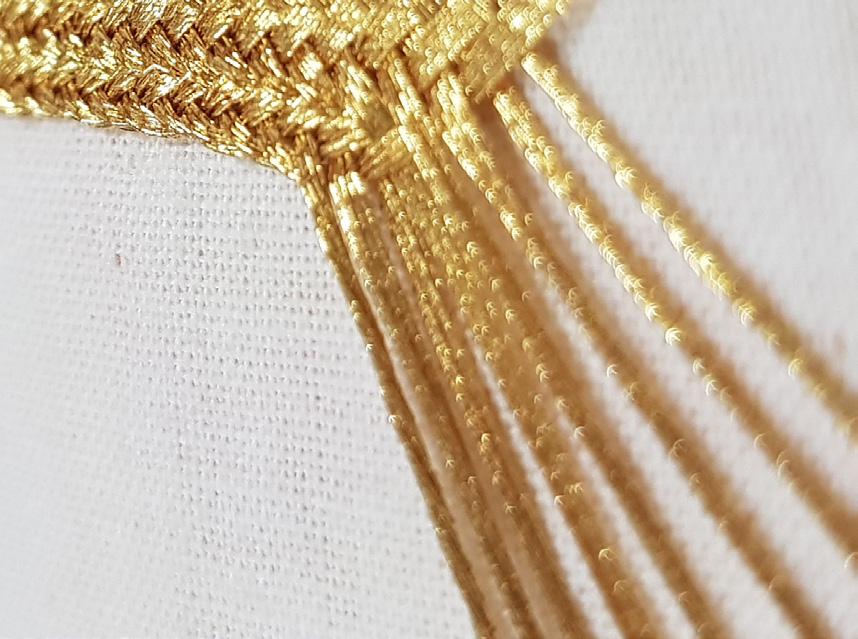
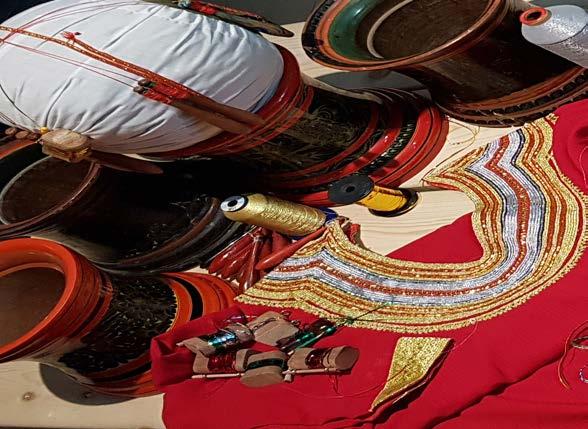
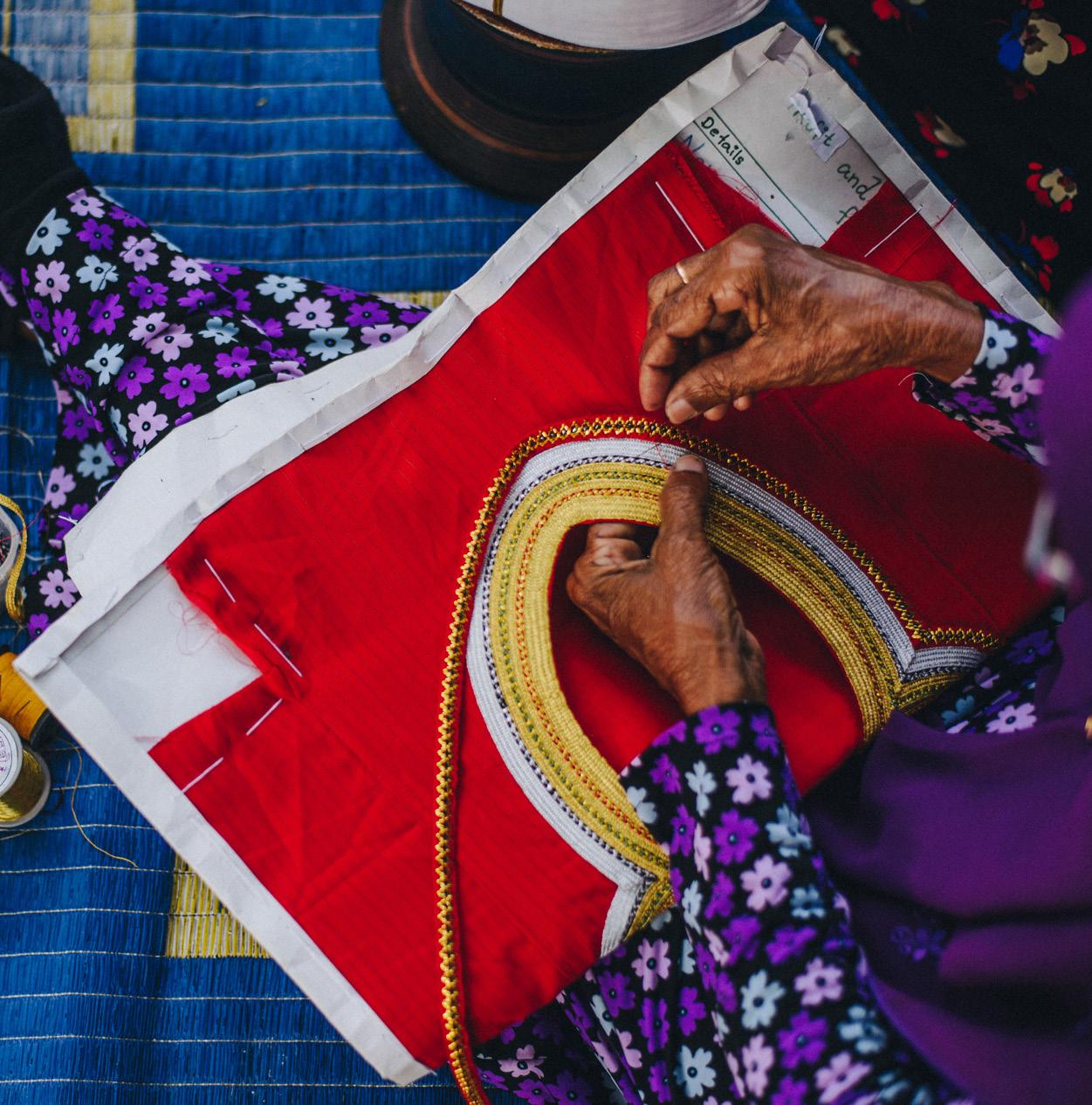

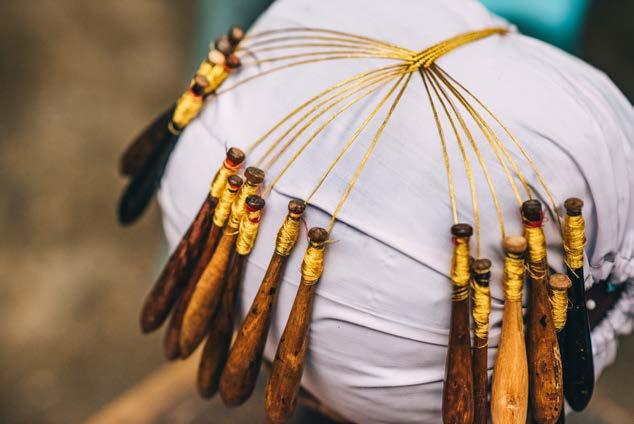
The embroidery of this distinctive neckline is one of the few traditional crafts still practised in the country. PHOTO: AISHATH NAJ
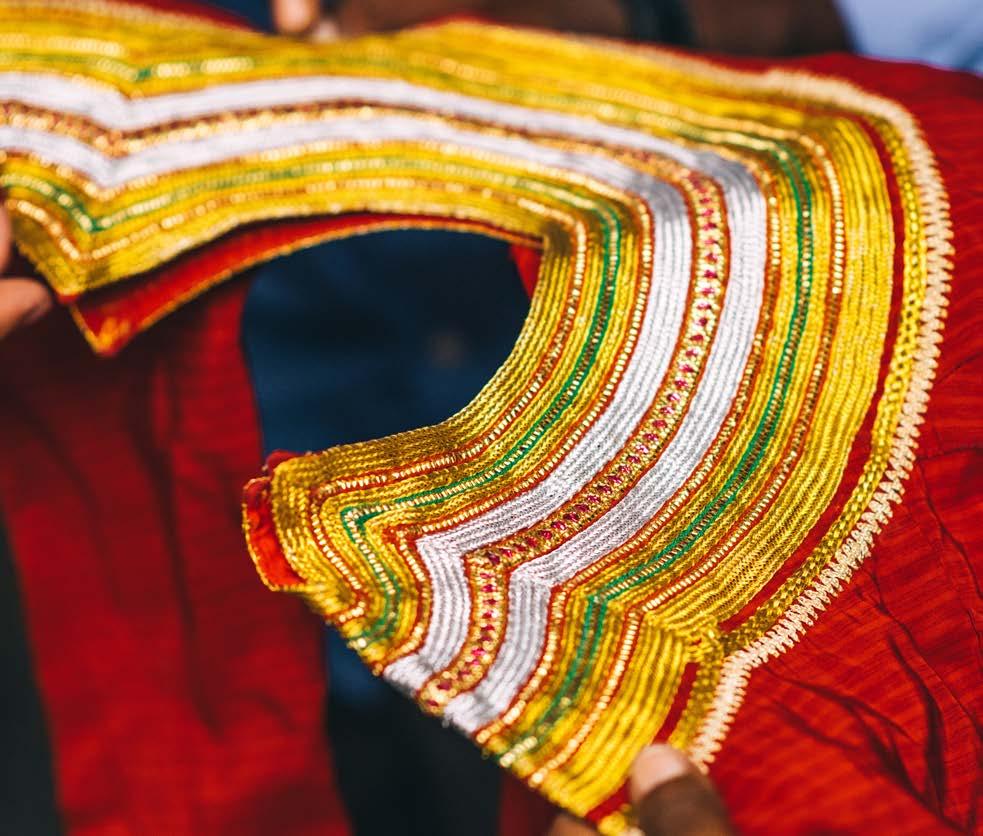
He went on to mention that such accessories required special permission – often purchased – from the king, and certain trends were even taxed. Maybe the golden collar and cuffs simply evolved from ladies who just wanted a little pazazz without all that paperwork.
Authentic images of the traditional dress can be seen in the historic first photos of Maldivians taken by German photographer CW Rosset in 1885, with little real change seen in more recent images from the 1960s and 70s. Indeed, Pyrard’s account, as well as his description of strict dress codes, suggests the approved dress – the only libaas allowed – had been similar for centuries.
That is until the mid-twentieth century, when the innovative (and fashionable) Prime Minister/President Amin Didi approved a new style of dress. Some believe his aim was to accentuate the female figure, but others have suggested a more functional need to combat a wartime scarcity of fabric.
Older photographs show that this simple but quickly-dated ‘mother-hubbard’ style was commonly worn in the 60s and 70s, though today is only seen at official functions, worn by ministers and Majlis members. Unsurprisingly, this second state-sanctioned style is known as faaskuri hedhun, which translates roughly (and romantically) as ‘approved dress’.

Both the boavalhu libaas and faaskuri hedhun are hard to spot in 2017, with the widespread resurgence of the headscarf over the past 15 years obscuring the dresses’ defining features. But, the more traditional libaas continues to stand out even when adapted to evolving dress codes.
So, the classic libaas will definitely keep trending in the memories, traditions and pockets of Maldivians. Whether it will make it out of the school plays and cultural festivals and back into women’s everyday wear is harder to tell.
1
2 3
4
5
6
5

2 3
7
8
9
1. MATHEE HIRU First line; is generally woven in gold thread.
2. BAGIYAA Made in red, green and black; usually used for second, fourth and sixth order.
3. BAADHALAA HIRU Sometimes used as an alternative to Bagiyaa; usually woven in red, green or black with gold or silver baadhalaa.
4. NUVAMALHEEGE HIRU Usually placed third; comes in gold and silver.
5. HUDHU HIRU Placed on both sides of the Rodhigandu; is only woven in silver.
6. RODHIGANDU Centrepiece of Kasabu; woven in different colours, depending on the design.
7. THIREE HIRU Woven only in gold.
8. THUNDU-KAIRI HIRU Placed next to “thundu” and is woven in gold.
9. THUNDU Usually comes in gold and is placed last.
Today, these can be arranged in any order. The order of arrangement and design varies from the north to the south of the Maldivian archipelago.







